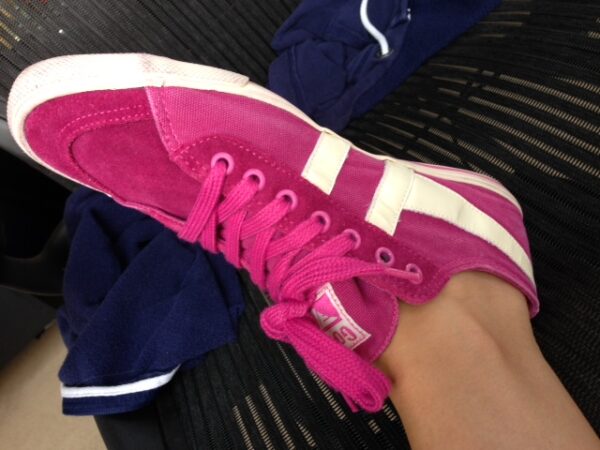
 We live in a culture that glorifies the same things it trivializes. Back in May 2010, Vanity Fair ran a profile of Christian Louboutin, “The Godfather of Sole.” No surprise to see the roster of rock stars and royalty for whom a pair of his artful shoes is pocket change. Danielle Steele, according to the article, has 6,000 pairs. That Toni Morrison owns (at least) one pair brought a big smile to this writer’s heart.
We live in a culture that glorifies the same things it trivializes. Back in May 2010, Vanity Fair ran a profile of Christian Louboutin, “The Godfather of Sole.” No surprise to see the roster of rock stars and royalty for whom a pair of his artful shoes is pocket change. Danielle Steele, according to the article, has 6,000 pairs. That Toni Morrison owns (at least) one pair brought a big smile to this writer’s heart.
From Cinderella’s glass slipper to Dorothy’s ruby red pair, shoes are nothing if not symbolic of everything from the psychological and historical to the erotic and obsessive. In The Uses of Enchantment, Bruno Bettelheim tells of those not-for-popular-consumption versions of Cinderella in which the stepsisters engage in foot mutilation, hoping to make the shoe fit. These days we have foot surgeons. I don’t know any women who would go to the extremes of shortening a toe or two, but bunion surgery is something more than one friend of mine has had or contemplates.
More to the point, a man engaged in an 11-hour filibuster would have to be wearing some pretty fancy (out-of-character) footwear for it to garner any attention at all and, even then, it would not hold a candle to what the pair of pink sneakers worn by Wendy Davis has come to embody. Yes, we pay a great deal of attention to what women in the public eye wear. We home in on the pearl necklace, the tailored jacket, the pin on a lapel. Image is everything. We play down what remains hidden. Tweeting about pink sneakers is sexier than tweeting about the back brace Senator Davis wore so she wouldn’t have to lean on anything as she stood her ground.
God really is in the details. A pair of shoes says as much about the woman wearing them as it does about the world in which she lives. What makes this story such a timeless one (albeit with a 21st century spin) is the way it meshes the political with the personal and turns a pair of sneakers into a symbol of solidarity for pro-choice supporters. Within days of Wendy Davis’s extraordinary filibuster, those pink running shoes (Mizuno Wave Rider 16) became the best-selling shoes on Amazon. (Never mind that Mizuno President Robert Puccini is an RNC supporter). Even if the mock reviews on Amazon try a little too hard, who can resist the obvious allusions shoes give rise to: comfortable ones like these truly are made for walking. Easy to picture thousands of women kicking ass in them, standing up for a right as inalienable as it gets. Or pounding the pavement for their hero if she makes that leap into the Texas gubernatorial race. So pretty in pink.
Once upon a time, as an ancient tale about the origin of shoes goes, there was a princess who stubbed her toe on a root sticking out of the ground while she was walking. To keep this from happening to anyone else in the kingdom, the princess wanted the prime minister to issue an edict declaring that all roads be paved in leather. The savvy prime minister knew there was nothing the king wouldn’t do for his daughter so he came up with a plan that would satisfy the princess without bankrupting the kingdom, namely, cutting and shaping pieces of leather that could be fitted to the foot.
And so it was—form and function laced into the fashioning of shoes, sensible ones at that. It’s a curious, rich, fascinating story that shoes can tell, one worthy of a museum. If you build it they will come, and, indeed they do to the Bata Shoe Museum in downtown Toronto. There’s no old woman living inside of this stylized shoebox made of limestone, glass, and steel and designed by Raymond Moriyama, but it is a treasure trove of footwear through the ages. Its most recent exhibition just happens to explore the rise of sneaker culture.

